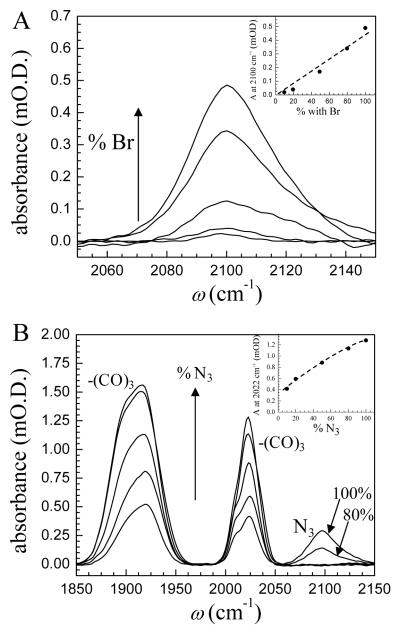Figure 1.
(A) Absorbance spectra of 11-azido-undecyl-silane modified silicon native oxide. The 2100 cm−1 absorption peak, due to the azide stretch, increases as the amount of 11-bromo-undecyl-trichlorosilane is increased in the initial deposition reaction mixture. (A - inset) Peak height of the azide stretch as a function of 11-bromo-undecyl-trichlorosilane. The trend is seen to be approximately linear, indicating that control over the azide content of the surface is achieved by simply changing the relative concentration of the functionalized and un-functionalized alkyl-trichlorosilane reagents. (B, B - inset) Absorbance spectra of the RePhen(CO)3Cl monolayers on silicon native oxide. There are three peaks in the spectrum due to the Re complex carbonyl stretching modes. The ~2025 cm−1 stretch is the tricarbonyl symmetric stretching mode. The modes at ~1895 and ~1920 cm−1 are the antisymmetric modes which are nearly degenerate. Residual azide after cycloaddition is visible due to the stretch at 2100 cm−1. The monolayers are synthesized with different amounts of azide as controlled by the relative concentration of the brominated precursor silane. A sub-linear trend in Re metal complex concentration is seen in the inset, indicating that there are other factors that influence the concentration of Re metal complex achieved after cycloaddition. Below 50% azide concentration on the surface, the residual azide remaining after cycloaddition is undetectable.

